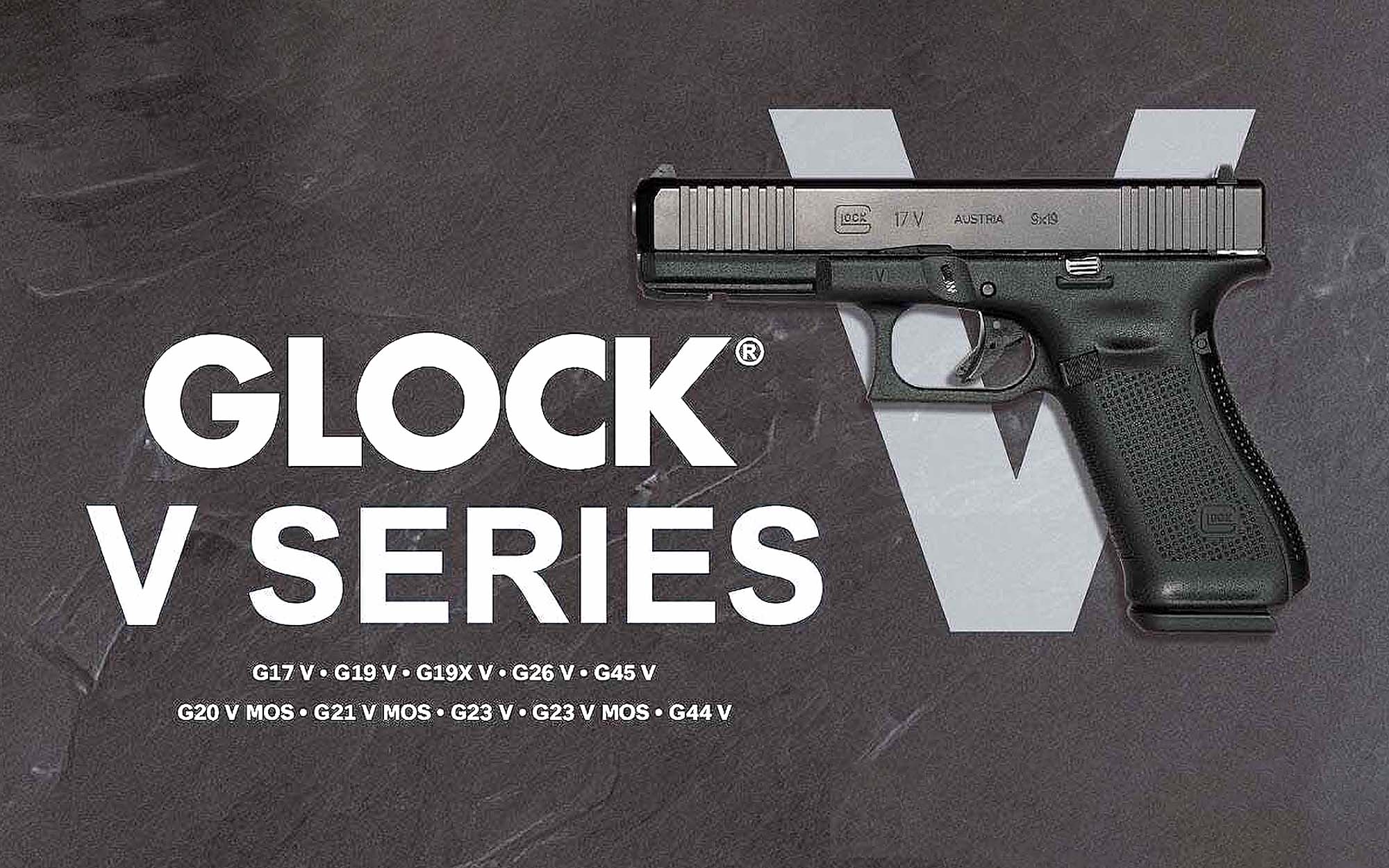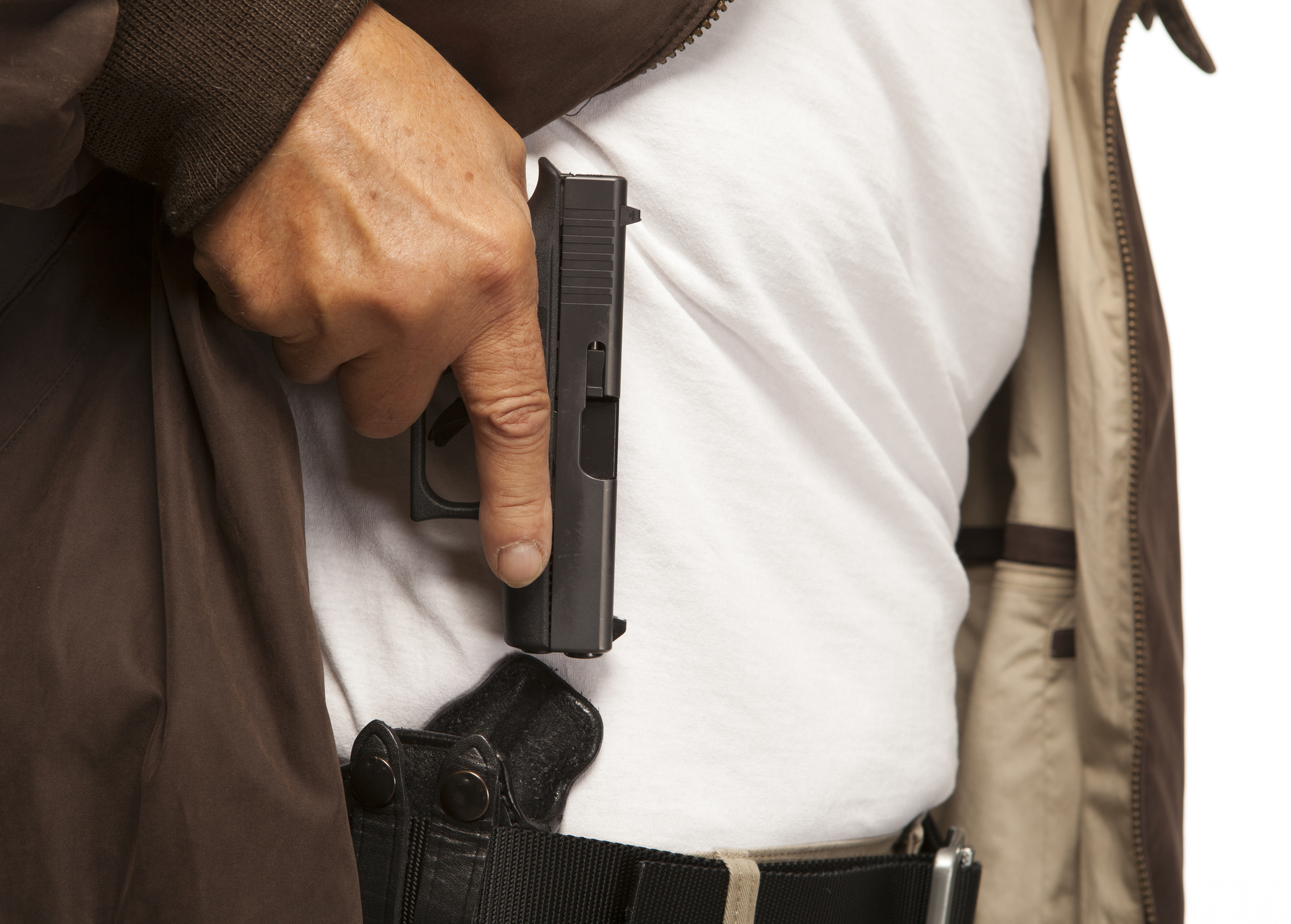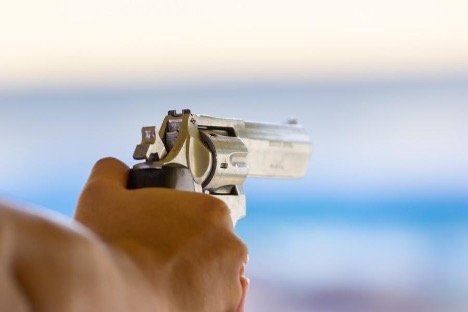AR10 Ultimate Guide: The Definitive Guide to the Best AR10s, AR10 Parts, and AR10 Accessories [2023]
The AR10 is a popular semi-automatic rifle that is used for hunting, competitive shooting, and self-defense. It is based on the original AR-10 designed by Eugene Stoner in the 1950s and has been modified and improved over the years to meet the demands of modern shooters. In this guide, we will take an in-depth look at what an AR10 is, how it works, and what you need to know to get the most out of your rifle.
How does an AR10 Work?
AR10 Operation
The AR10 is a semi-automatic rifle that operates using the direct gas impingement system. In this system, a small amount of gas from the fired cartridge is bled through a gas tube and into the bolt carrier group, which is responsible for cycling the action of the rifle. In this guide, we will take a detailed look at how the AR10 works, from loading the magazine, to selecting from safe to fire, to pulling the trigger, and finally to the action of the gas system that makes the bullet exit the barrel and load another round, making the rifle ready to fire again.
How to load an AR10?
Image By [American Rifleman https://www.americanrifleman.org/content/getting-started-ar-101/]
The first step in using an AR10 is to load the magazine. This can be done by pressing the rounds, one by one, into the magazine until it is fully loaded. You then take the loaded magazine and place it into the magazine well. Once the magazine is seated inside the magazine well you finish loading the AR10 by pulling back on the charging handle. This action loads the round into the chamber. Once you have all the rounds in the magazine the bolt locks to the rear. You can reload the firearm by repeating the loading process by placing another magazine inside the magazine well and chambering a round by pulling and releasing the charging handle or by pressing the paddle on the bolt catch.
How to Shoot an AR10?
Image By [Magpul]
After loading the AR10 and ensuring that it is pointed in a safe direction at a target you want to shoot and your eyes aimed in on the target you need to take the safety selector switch from the “safe” to the “fire” position. The AR10 has a manual safety lever that is usually located on the left side of the receiver. When the lever is in the “safe” position, the trigger is blocked, and the rifle cannot be fired. To select from safe to fire, simply rotate the safety lever to the “fire” position. Once the safety selector is in the fire position you are ready to shoot. Once the safety lever is in the “fire” position, you can pull the trigger. When the trigger is pulled, it releases the hammer, which strikes the firing pin and ignites the primer. This, in turn, ignites the propellant in the cartridge, generating a small explosion that creates hot gases. The hot gases produced by the explosion of the cartridge are bled through a gas tube and into the bolt carrier group. The bolt carrier group is responsible for cycling the action of the rifle. It contains the bolt, which locks into the barrel extension and keeps the cartridge in place, as well as the extractor, which pulls the spent casing out of the chamber.
The hot gases produced by the explosion of the cartridge are bled through a gas tube and into the bolt carrier group. The bolt carrier group is responsible for cycling the action of the rifle. It contains the bolt, which locks into the barrel extension and keeps the cartridge in place, as well as the extractor, which pulls the spent casing out of the chamber.
As the hot gases fired from the cartridge enther the bolt carrier group, they push the bolt carrier to the rear, which in turn compresses the action spring and unlocks the bolt. This allows the spent casing to be extracted and ejected from the rifle. At the same time, the bolt carrier continues to move to the rear, pulling the next round from the magazine and feeding it into the chamber. Finally, the action spring pushes the bolt carrier forward, locking the bolt into the barrel extension and compressing the firing pin. The AR10 is now ready to fire again.
AR10 Origins
Image By {Armalite]
The AR-10, the "Big Brother" of the AR-15, has a rich and intriguing history. Born from the need to replace the trusty M1 Garand, the U.S. military sought a rifle that could fire faster, more accurately and with lighter materials. The establishment of NATO brought together a "Rifle Steering Committee" to unify their forces with a standardized rifle. Firearms manufacturers were invited to participate in trials to determine the new service rifle, but a small player, ArmaLite, an engineering subsidiary of Fairchild Engine and Airplane Corporation, brought a game-changer to the table.
Lead by chief engineer Eugene Stoner, ArmaLite's nine-member team created innovative designs using materials such as aluminum and fiberglass. The AR-10, developed by Stoner, was a straight-line design with elevated iron sights, a recoil compensator and a patented gas system. This system used gas from a fired cartridge to cycle the action and ready the gun for firing again.
The initial AR-10 design, completed in 1955, was chambered for the 7.62x51mm NATO cartridge, making it about a pound lighter than other infantry rifles of that era. However, the inclusion of a composite barrel made of aluminum and steel proved to be the rifle's downfall in the trials. Despite ArmaLite's efforts to replace the barrel, Springfield Armory refused to recommend its adoption. The U.S. Army deemed the AR-10 a purely prototypical firearm and selected the more conventional T44 as the next service rifle, which became the M14.
Despite not entering service in the U.S., the AR-10 left a lasting impact on the arms industry. ArmaLite licensed the AR-10 to several nations and arms manufacturers, including the Dutch group Artillerie Inrichtingen, and even produced models for countries such as Guatemala, Burma, Italy and Cuba. And, as history shows us, the AR-10 would later inspire the creation of the now-iconic AR-15. A variant of the AR-15 known as the M16 and a version of the AR10 known as the SR-25 would later become adopted by the U.S. military
AR10 Parts Overview
Image by [Sig Sauer https://www.sigsauer.com/716i-tread-snakebite-se.html]
The AR-10 is a rifle that consists of several components that work together to provide accurate and reliable fire. Here is a list of the different parts of an AR-10 and their definitions:
Image by[ Aero Precision https://www.aeroprecisionusa.com/m5-ar308/combo-sets]
AR10 Receiver: The main component of the AR-10 that houses the action, trigger mechanism, and other internal parts of the rifle.
Image By [Aero Precision https://www.aeroprecisionusa.com/catalogsearch/result/?q=308+barrel]
AR10 Barrel: The metal cylinder that runs along the length of the rifle and houses the bullet.
Image By [Aero Precision https://www.aeroprecisionusa.com/308-bolt-carrier-group-nib]
AR10 Bolt Carrier Group (BCG): The component that contains the bolt and carrier, responsible for cycling the action and loading a new round into the chamber.
Image by [Lantac https://www.lantac-usa.com/]
AR10 Bolt: A cylindrical part that locks into the barrel and extracts the spent cartridge.
Image By [DSA Arms https://www.dsarms.com/p-15797-dsa-ar15-m16-cut-bolt-carrier-assembly-only-no-bolt-included.aspx]
AR10 Bolt Carrier: The part that holds the bolt and moves it back and forth within the receiver.
Image By [ Wikipedia https://commons.wikimedia.org/wiki/File:M16_rifle_Firing_FM_23-9_Fig_2-7.png]
AR10 Gas System: The mechanism that uses gas from a fired cartridge to cycle the action and load a new round.
Image by [Radical Firearms]
AR10 Gas Block: The component that regulates the amount of gas that enters the gas system.
Image By [Aero Precision https://www.aeroprecisionusa.com/gas-tube-stainless-steel]
AR10 Gas Tube: A metal tube that carries gas from the gas block to the receiver.
Image By [Aero Precision https://www.aeroprecisionusa.com/m5-ar308/spare-parts/furniture]
AR10 Stock: The component that holds the buffer and spring and serves as the rear support for the rifle.
Image By [Aero Precision]
AR10 Buffer: A weighted component that helps slow the rearward movement of the BCG.
Image By [Aero Precision]
AR10 Recoil Spring: A coiled component that provides pressure to the buffer and helps return the BCG to its forward position.
Image By [Aero Precision]
AR10 Handguard: The component that protects the barrel and provides a gripping surface for the shooter's off hand.
Image By [Sig Sauer]
AR10 Sights: The components that help the shooter aim the rifle, including iron sights, scopes, and red dots.
Image By [Magpul]
AR10 Magazine: The component that holds the rounds and feeds them into the rifle.
Image By {Aero Precision]
AR10 Trigger: The part that is pulled to release the hammer and fire the rifle.
Image By [DSG Arms}
AR10 Hammer: The part that strikes the firing pin and ignites the cartridge.
Image By [Wilson Combat]
AR10 Firing Pin: The part that strikes the primer of the cartridge and ignites the gunpowder.
Image By [Bauer Precision]
AR10 Safety Selector: The part that allows the shooter to safely engage or disengage the trigger.
These are the main components of an AR-10 rifle, and a basic understanding of them can help you use and maintain your rifle effectively.
AR10 Calibers:
Image By [308ar.com https://308ar.com/6-5-creedmoor-ar-most-accurate-ar/]
The AR10 is a versatile rifle platform that can accommodate several different calibers. Each caliber has its own unique benefits and drawbacks, so choosing the best one for you will depend on your intended use and personal preferences. Here are some of the most popular calibers for the AR10, along with a discussion of their pros and cons and the best uses for each:
Image By [Wikipedia]
.308 Winchester: This is one of the most common calibers for the AR10, and for good reason. The .308 Winchester is a proven performer that is capable of taking down big game at medium to long range. It is also relatively inexpensive, making it a good choice for those on a budget. One of the major drawbacks of the .308 Winchester is that it has relatively heavy recoil, which can make it difficult to shoot accurately for some shooters.
6.5 Creedmoor: The 6.5 Creedmoor is a newer cartridge that has quickly gained popularity among long-range shooters. This cartridge has a flatter trajectory and less wind drift than the .308 Winchester, making it a great choice for long-range shooting. It also has less recoil than the .308 Winchester, which makes it easier to shoot accurately. The downside of the 6.5 Creedmoor is that it is more expensive than the .308 Winchester and may be difficult to find in some areas.
.260 Remington: The .260 Remington is another popular choice for long-range shooters. It offers similar performance to the 6.5 Creedmoor, but with slightly less recoil. This cartridge is known for its excellent accuracy and mild recoil, making it a great choice for long-range shooting or competition. The downside of the .260 Remington is that it is not as widely available as some of the other calibers and can be more expensive.
.243 Winchester: The .243 Winchester is a versatile cartridge that is suitable for both hunting and long-range shooting. It is capable of taking down medium-sized game at long range and is a good choice for shooters who want a cartridge that is capable of taking down game at a variety of ranges. The downside of the .243 Winchester is that it is less powerful than some of the other calibers and may not be suitable for taking down larger game.
.338 Federal: The .338 Federal is a relatively new cartridge that is gaining popularity among hunters and long-range shooters. This cartridge is capable of taking down big game at long range and is a great choice for those who want a powerful cartridge for hunting or shooting at long range. The downside of the .338 Federal is that it has more recoil than some of the other calibers, which can make it difficult to shoot accurately for some shooters.
Ultimately, the best caliber for an AR10 will depend on your intended use and personal preferences. Consider your budget, the type of shooting or hunting you plan to do, and your comfort level with recoil when choosing the best caliber for your AR10.
Why an AR-10 vs AR-15: What’s Best For You?
Image By [SOFREP]
The AR-10 and AR-15 rifles are two of the most popular and versatile firearms in the market today. Both rifles have been designed and developed to meet the needs of modern shooters, whether they are used for hunting, home defense, or target shooting. The AR-10 and AR-15 are two rifles that were developed by the same company, ArmaLite, in the 1950s. The AR-10 was developed first, and it was designed to be a battle rifle that could fire the powerful .308 Winchester cartridge. The AR-15, on the other hand, was developed as a lighter and more maneuverable version of the AR-10 that fired the smaller .223 Remington cartridge. Let’s explore the main differences between the AR-10 and AR-15, and help you decide which one is best for you.
Why Choose an AR-10:
The AR-10 is an excellent choice for those who are looking for better performance at distance. One of the main reasons for this is that the AR-10 is designed to accept larger calibers, such as the .308 Winchester, which is known for its power and accuracy. Larger calibers are less effected by wind drift allowing the shooter to reach out to longer distances and take down larger targets with ease.
Another reason why you might choose an AR-10 is that it is a great choice for hunters. The larger calibers used in the AR-10 provide better terminal performance and allow hunters to take down larger game with ease. If you want to do more than punch paper at distance than an AR10 might be the best option for you.
Why Choose an AR-15:
The AR-15 is an excellent choice for those who are looking for a rifle that is lighter and has lighter recoil. The AR-15 is significantly lighter than the AR-10, which makes it easier to carry and maneuver in tight spaces. Additionally, the .223 Remington cartridge used in the AR-15 has a lighter recoil, which makes it easier to control and shoot accurately, especially for newer shooters.
Another reason why you might choose an AR-15 is that it is a great choice for target shooting and home defense. The lighter weight and lighter recoil make it easier to shoot accurately and quickly, which is essential for these types of activities.
Moreover, with the advent of calibers like the 6.5 Grendel, hunters can now enjoy good terminal performance and accuracy with an AR-15. This has made the AR-15 a popular choice among hunters who are looking for a versatile and lightweight hunting rifle.
In conclusion, both the AR-10 and AR-15 rifles have their own unique advantages and disadvantages. It all comes down to what you are looking for in a rifle and what you plan on using it for. If you are looking for a rifle that provides better terminal performance at long range distances, then the AR-10 is an excellent choice. If you are looking for a lighter and more maneuverable rifle, then the AR-15 is a great option.
How to Choose the right AR-10 for you?
The AR10 is a versatile rifle that can be used for a variety of purposes, from long-range shooting to hunting to competitive shooting. When choosing an AR10, it's important to consider what you want to use it for, as well as your budget, to ensure that you find the best rifle for you.
The first question to ask yourself is what you want your AR10 for. If you are looking for a long-range rifle, you may want to opt for a heavier gun with a longer barrel and a chambering like 6.5 Creedmoor, which excels at long distances. This type of rifle may also be well-suited for hunters who need to take shots at longer distances.
If you are looking for a competition gun, you may want to opt for a shorter, lighter and more maneuverable AR10. These rifles are designed to be quick and nimble, which is ideal for fast-paced competitions where accuracy and speed are both important.
If you are on a budget, you may want to consider an AR10 chambered in 308, as 308 ammunition is usually less expensive than other calibers. Additionally, you may want to look for an AR10 that has a more basic set of features, rather than one with a lot of bells and whistles, to keep the cost down.
Finally, if you are hunting, you may want to add a silencer to your AR10 to reduce the noise that it produces. This can be particularly useful if you are hunting in an area where noise can spook game, or if you simply want to minimize your impact on the environment.
Choosing the best AR10 for you is a matter of considering what you want to use it for, your budget, and any other specific requirements you may have. By taking these factors into account, you can find the perfect AR10 to meet your needs.
Cleaning and Maintenance of Your AR10: A Step-by-Step Guide
If you own an AR10, it is important to regularly clean and maintain it to ensure it operates at its best. In this article, we will go through a step-by-step guide to help you keep your AR10 in top condition.
Step 1: Clear Your AR10
The first step in cleaning and maintaining your AR10 is to ensure that it is not loaded. To do this, remove the magazine and pull the charging handle back to inspect the chamber. This will allow you to make sure that the rifle is unloaded before you start cleaning it.
Step 2: Disassemble the Rifle
Image By [Black Rifle Report]
Next, you will need to disassemble the rifle. This will vary depending on the type of AR10 you have, but generally, you will need to remove the upper and lower receivers, the bolt carrier group, and the buffer assembly. This will give you access to all the parts that need to be cleaned.
Step 3: Clean the Upper and Lower Receivers
Start by cleaning the upper and lower receivers using a cleaning solution and a brush. You can use a special cleaning solution for firearms or a mild household cleaning solution. Make sure to scrub every nook and cranny, paying special attention to the trigger mechanism and any other moving parts. Use a clean cloth to wipe off any excess cleaning solution and ensure it drys completely and quickly to avoid rust when using a water based cleaner.
Step 4: Clean the Barrel
To clean the barrel, use a cleaning rod and patch jag with a cleaning solution-soaked patch. Push the patch through the barrel from the breech end and pull it out from the muzzle end. Repeat this process until the patches come out clean.
Step 4: Lubricate the Parts
Once the parts have been cleaned, it is time to lubricate them. You will want to use a high-quality oil or grease to lubricate the moving parts of the rifle, including the bolt carrier group and any other parts that may require lubrication.
Step 5: Reassemble the Rifle
After the parts have been cleaned and lubricated, it is time to reassemble the rifle. Place the charging handle and the bolt carrier gorup back into the upper receiver then place the upper back onto the lower and pin them together.
Step 6: Inspect the Rifle
Finally, once the rifle has been reassembled, you will want to inspect it to make sure that everything is in good working order. Check that the barrel and chamber are free of any obstructions, and that the bolt carrier group is functioning properly. After inspection conduct a functions check by charging the firearm, point it in a safe direction and take the weapon off safe. Then pull the trigger and pin it to the rear. Charge the weapon again while you pin the trigger to the rear. Release the trigger and ensure it resets. Finally, place the weapon on safe and ensure that the hammer does not drop when you pull the trigger. If it passes this test your AR10 is functioning properly.
Best Long Range AR10s
Daniel Defense DD5 V4 6.5 Creedmoor 18" Barrel MLok Rail 02-158-22207-047
Daniel Defense DD5 V5 6.5 Creedmoor Milspec+ 20" Barrel 02-165-81690-047
Daniel Defense DD5 V5 6.5 Creedmoor 20" Barrel 02-165-30063-047
Best Competition AR10s
Taran Tactical V7 Harbinger 308 Hyperfire Trigger 14.5" Barrel V7-TTI-14.5-MLOK
POF Patriot Ordnance Factory Revolution 308 Gen 4 18" Barrel Kuiu Finish AR-10 01888
ArmaLite AR103GN18 AR-10 Competition 308 Win 25+1 18" Optics Ready
Best Budget AR10
DPMS DP10 308 Classic 16" Barrel DP51655126021
Sig Sauer 716 Tread 762 Nato 16" Barrel 308 AR-10 R716I-16B-TRD
Sig Sauer 716i Tread Snakebite 308 FDE MLok 716 716I-16B-TRD-SB-SE
Best High-Tier AR10s
Daniel Defense DD5 V3 308 16" Barrel MLok Handguard 02-157-07258-047
LWRC International REPR Side Charge, MKII 308/7.62x51mm REPRMKIIR7BF16SC










